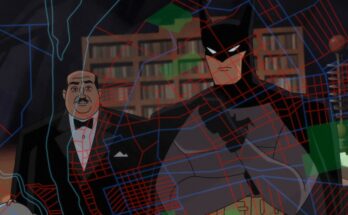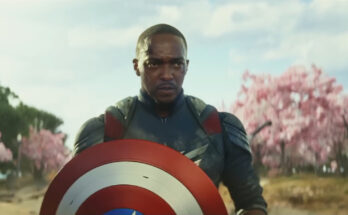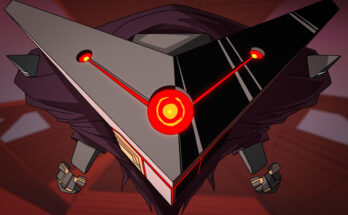Want to hear more from the actors and creators of your favorite shows and films? Subscribe to The Cinema Spot on YouTube for all of our upcoming interviews!
HBO’s series premiere of Watchmen was well-received last week. We were introduced to the Tulsa police force, the Seventh Kavalry, and all the people in between who are caught in the events of the fictional drama of the superhero story. This week’s episode sees the main character Angela Abar initiating the investigation of her police chief’s lynching.
“Martial Feats of Comanche Horsemanship” is an episode directed by Nicole Kassell and written by Damon Lindelof (this time with the help of Nick Cuse).
If you haven’t seen the previous episode (or this one for that matter) and want to avoid spoilers, do so now then return to this article.
Throughout the episode, Abar learns more about the history of Tulsa along with her own milieu, resulting in a hole dug deeper and a past found darker than first perceived. Sister Night meets a man in a wheelchair claiming to have some sort of power, where it’s later revealed that he is her 105-year-old grandfather. He claims to be accountable for the lynching of Chief Judd Crawford.
We also learn what happened to the Tulsa police task force and why they were compelled to don the masks that they wear now. According to Crawford in a flashback, a “coordinated attack” was made at over a few dozen homes precisely at midnight on Christmas morning–few years before the main events of the series–in an event called “White Night.” Abar and her family were victimized in the process, and in her waking moments of hospitalization, she is told her police partner and his wife were killed.
White supremacism has been prominent for centuries; the aforementioned scene and the previous episode are good evidence. Racial equality along with the divide because of its issues are just two of the many themes in this episode. The first scene of the episode shows the Nazis sending a message to African American soldiers to succumb to the wrong side of history. In another example, we see Abar discover, at the suggestion of her supposed grandfather, although not meant literally, Crawford’s “skeleton in his closet”: a Klansman outfit. We don’t know much yet, but perhaps he could be behind his own death.
In addition, Abar speaks to her son Topher about the topic:
There are people who believe that this world is fair and good, [that] it’s all lollipops and rainbows … [people like us] don’t do lollipops and rainbows because we know those are pretty colors that just hide what the world really is: black and white.
Some people in today are oblivious and/or are unaffected by the psychological events in our sociopolitical world. Bad things don’t happen to them so they decide not to take part in things. Abar is talking about individuals’ out of place-ness with reality, that people can be out of sight and out of mind with the way things are.
The episode has its fair share of Easter Eggs:
- A man running a newsstand is seen handing out papers to a man and woman. This could be reminiscent of the secondary characters from the original 1986-7 run of Watchmen.
- Ozymandias’s haunted creation gets another reference. In the pilot, a rain of squid came down from the sky. In this episode, newspaper headlines read “Giant Squidfalls Baffle Scientists.”
- Hooded Justice makes an appearance in the television show’s fictional metaseries American Hero Story. The dead body of one Rolf Müller is found, however that may not have been HJ’s civilian identity. In the comics, the masked vigilante was a former member of the Minutemen and an influence on the first Nite Owl, Hollis Mason.
- Jon Osterman and his transformation into Doctor Manhattan are made into a play titled “The Watchmaker’s Son” written in the pilot episode by the Master. In the comic book lore, the character was turned into a hero during an accidental experiment that had gone wrong.
Vigilantism is another recurring theme in the episode, especially with Hooded Justice’s monologue:
Who am I? When I was little, every time I looked in the mirror I saw a stranger staring back at me, and he was very, very angry. What could I do with all this anger? Hot, vibrating electricity with no place to ground it. If he couldn’t release his rage, maybe I could help him hide it. I never felt comfortable in my own skin, so I made a new one. And when I slipped it on, he and I became one. His anger became mine as did his thirst for justice. So who am I? If I knew the answer to that, I wouldn’t be wearing a f*ckin’ mask.
As we’ve seen with Sister Night, donning a mask and fighting crime (or committing crime) are outlets for vigilantism. People need to blow off steam, and what better way than concealing one’s own identity? American Hero Story gives off a great impression as a show within the show, and like Hollis Mason’s book pages in the comic run, this fictional show would make a fantastic kind of interlude for HBO’s television series.
Clocks are shown to be a symbol of immortal being, or at least extended lifetime. When Abar’s home is broken into, a member of the Seventh Kavalry shoots at a clock, but it is still seen in present time. In another scene, the Master spectates his own play. An actor is burnt alive and the only remnant is a pocket watch. As the Master says, “Nothing ever ends … it’s only just begun.” Humans may perish and wither away, but time is omnipotent and ubiquitous.
The soundtrack and cinematography for the show remain on point. Both are excellent, including the transition from Crawford’s horseman painting to the Master riding on a horse, and the Beastie Boys’ song “Egg Man” and Richard Wagner’s Die Walküre Act III: “Ride of the Valkyries.”
Overall, this second episode reveals a lot without having to say too much. Horsemen and clocks have become representative of the End of Days, showing us that time is running out for the human lifeforms but time for itself will continue to live on. Secrets cannot be hidden forever, and someday they’re bound to surface. Historcity and social background give depth to one’s own circumstances. Lastly, we are always being watched over, as is the case with the men with wings.
What do you think? Have you seen Watchmen yet? Have you read the comic series? If not, do you plan to? Let us know! For more DC-related news and reviews follow The Cinema Spot on Twitter (@TheCinemaSpot) and Instagram (@thecinemaspot_).
Watchmen is out on HBO now!
Managing editor & film and television critic with a Bachelor's of Arts in English Literature with a Writing Minor from the University of Guam. Currently in graduate school completing a Master's in English Literature.






